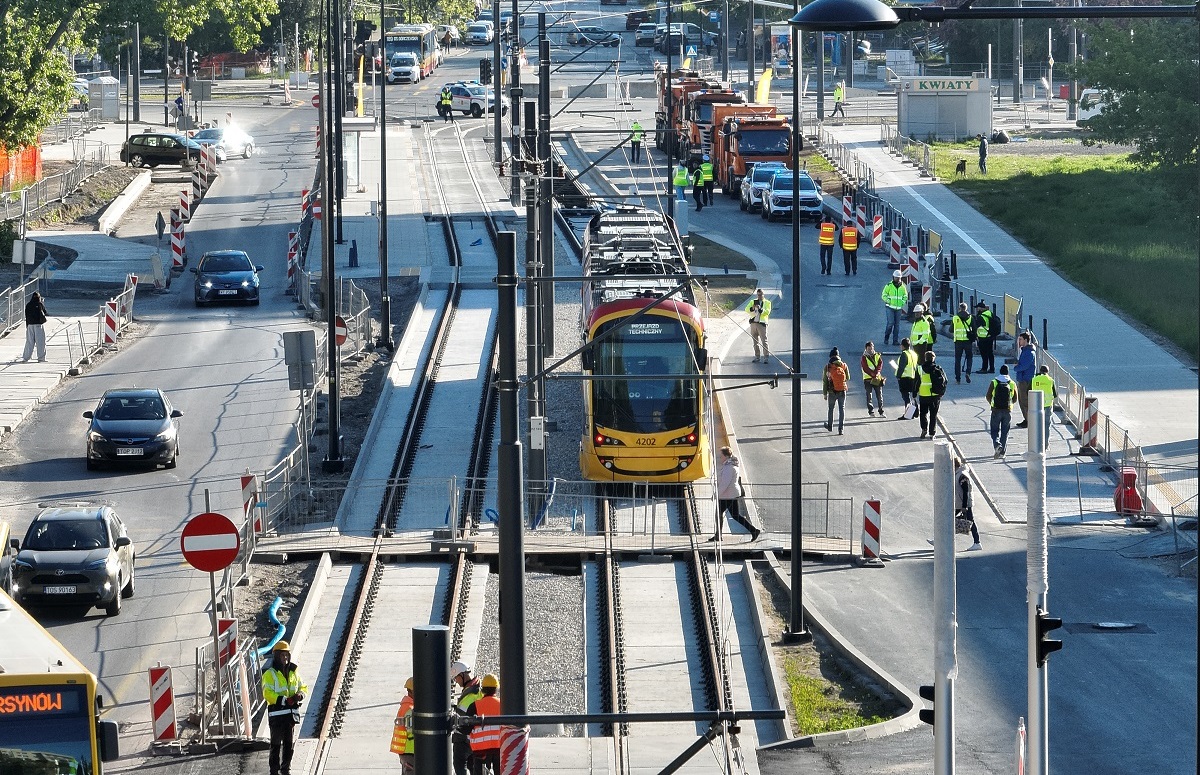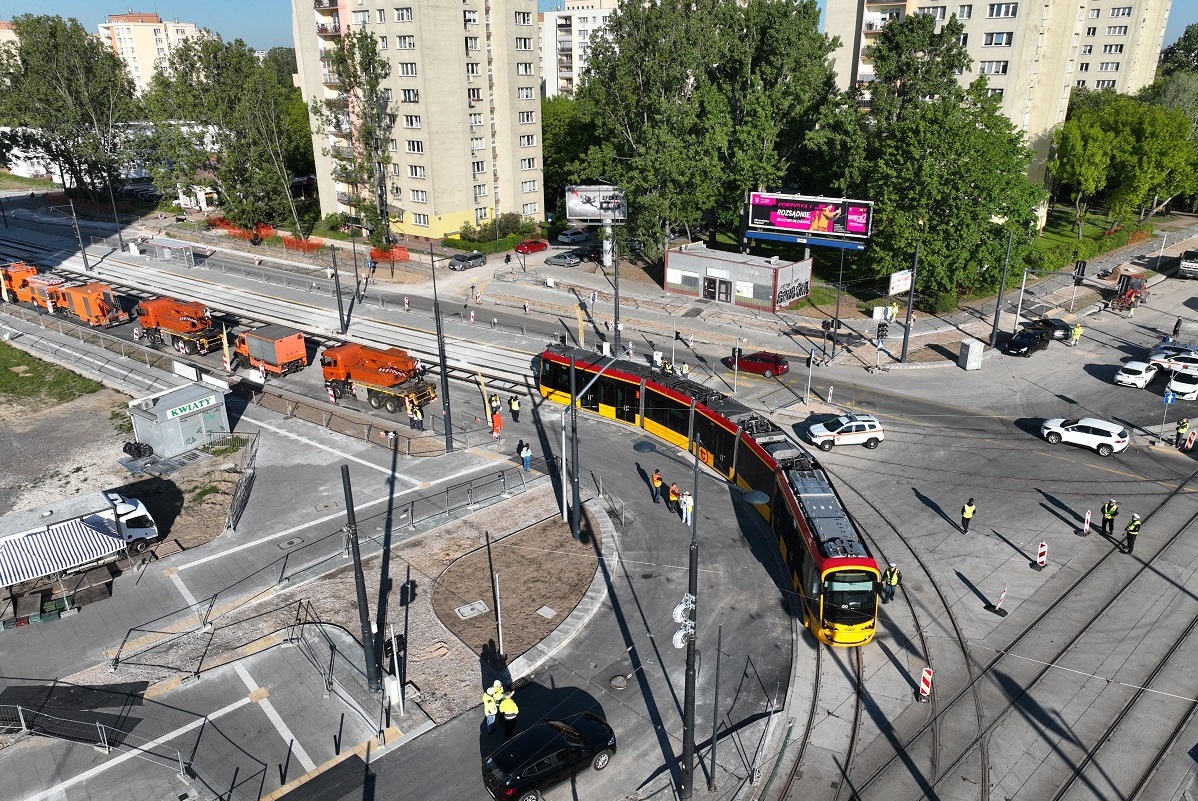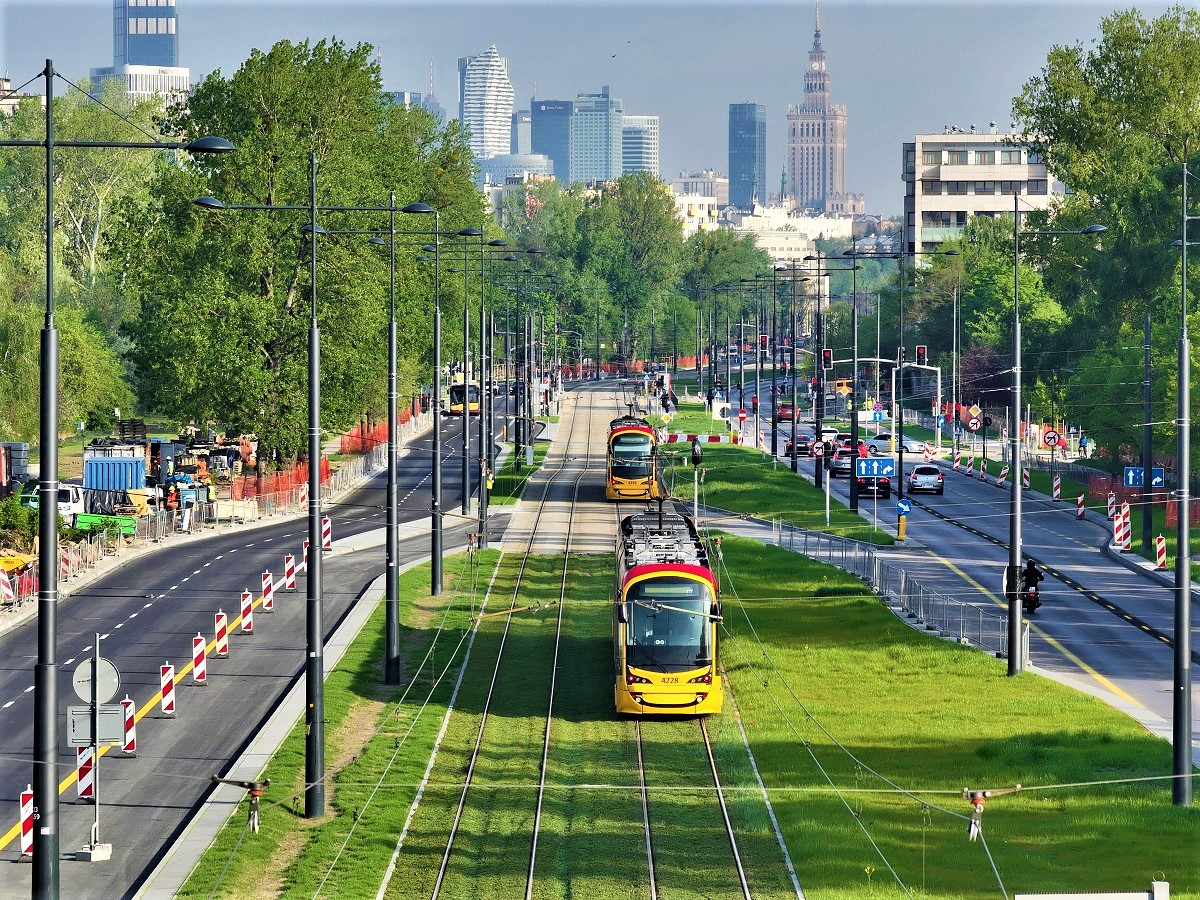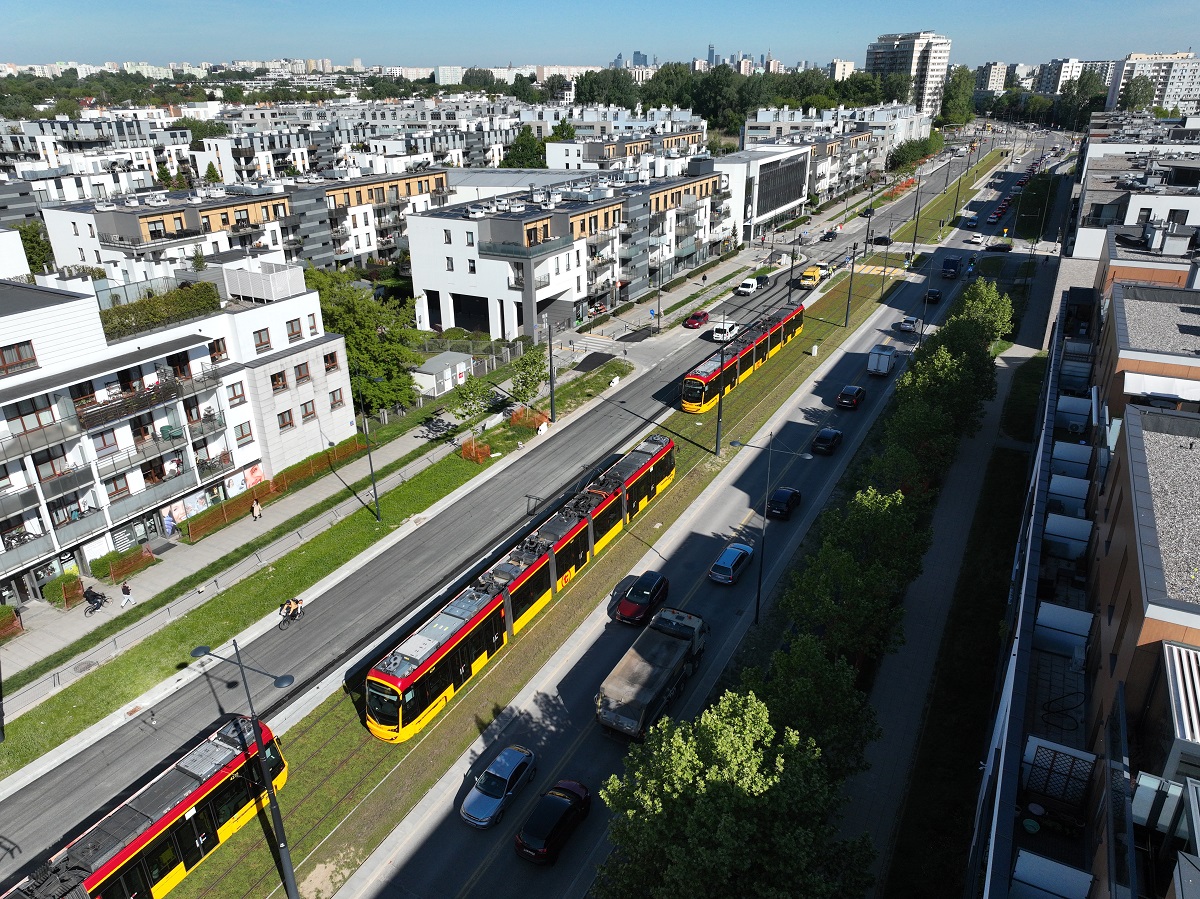The Warsaw Municipal Transport Authority (ZTM) has begun a comprehensive operational training exercise on the tram Line 19 extension heading to the Stegny terminus, a new section of the Wilanów tram route.

The goal of the exercises was not only to test the technical readiness of individual units but, above all, to practise cooperation between services, under conditions as close as possible to real emergency situations. The teams responded together to simulated incidents that required quick repair of faults, restoration of track passability, and the safe management of tram traffic. The exercises included tasks such as towing or lifting a tram.
These tests also aimed to improve communication between the different teams, streamline actions during crises, and increase the response speed to incidents that affect the continuity of tram operations.
The tracklaying on the route to Stegny is mostly complete, and the traction network is expected to be connected in June. Once the construction of the overhead traction network is completed, the tram route to Stegny will be officially opened. The event is scheduled for this summer when the line will link Dolny Mokotów with the Central Railway Station.
The Stegny tram extension, which is part of the Wilanów tram route, will be launched in the summer. At that time, the new tram Line 19 will begin operation, connecting the Św. Bonifacego terminus, and thus Dolny Mokotów, to the Central Railway Station and the stretch of Jana Pawła II Avenue.

The Wilanów tram route in Warsaw connects the Miasteczko Wilanów district with the city centre and other areas, including Żoliborz, Bielany, and Ochota. The new route is 6.5 km long and includes 12 new stops. Tram lines 14 and 16 are the first two lines operating on this new Wilanów route, which opened in October 2024.
In the first six months, 10.5 million passengers travelled on the new tram lines 14 and 16, which connect Miasteczko Wilanów with downtown and Ochota, since October 2024. About 40% of passengers travelled on the Wilanów section of the new route.
Among the two new lines, Line 16 is significantly more popular, carrying around 80% of all passengers who use both services. By the end of April, nearly 8 million people had travelled on Line 16, including almost 3 million on the new section, while Line 14 served over 2 million passengers, with over 1 million on the new stretch.
The Wilanów tram route provides better connections to the residents of southern Warsaw, not only for longer journeys but also for local trips.

Warsaw is a city that believes the proper functioning of public transport is essential for the city’s mobility and dynamism. Thus, it is focused on the development and modernisation of its urban rail system, by modernising and expanding the existing network while acquiring new trams.
To accommodate the growing network, Warsaw is investing in a new generation of trams. The tram expansion is supported by substantial EU funding. For instance, the Wilanów extension received over EUR 120 million from the European Union, contributing to the EUR 280 million total project cost.
A recent tender seeks to procure up to 160 low-floor trams, including both unidirectional and bidirectional models, with a focus on passenger comfort and environmental sustainability.
Impact of EU Funding
Thanks to EU support, the completion of the first metro line and the full construction of the second line became possible after 2004. European funding also enabled the purchase of 72 new trains, which were added to both lines and significantly improved the comfort of travel for passengers.
Tramwaje Warszawskie (Warsaw Trams) also benefited greatly from EU funding, which co-financed the acquisition of a total fleet of 434 new low-floor tram cars.
The tram extension to Miasteczko Wilanów – the project “Construction of the Wilanów tram route, along with the purchase of rolling stock and supporting infrastructure – Phase II” has been co-financed by the European Union under the programme European Funds for Infrastructure, Climate, and Environment 2021-2027, and is a project of strategic importance. The total cost of the project is more than PLN 2 billion (EUR 485.6 million), with a co-financing of PLN 900 million (EUR 212.3 million).
EU support also helped fund the construction of the Annopol tram depot, which consists of 14 buildings and incorporates eco-friendly technologies. Annopol is the first depot in Poland to be largely powered by renewable energy sources, and it uses heat pumps and solar panels. The total cost of building the depot was PLN 655 million (EUR 154.5 million).
 In addition, the commuter rail system in the Warsaw metropolitan area, Szybka Kolej Miejska – SKM, has also seen significant growth. With EU funding, the city acquired 44 out of the 47 trains currently in operation. This allowed Warsaw to expand its rail network within the city and surrounding municipalities and to retire 8 of its oldest trains. Additionally, the Warszawa Wola rail siding was modernised to improve operations.
In addition, the commuter rail system in the Warsaw metropolitan area, Szybka Kolej Miejska – SKM, has also seen significant growth. With EU funding, the city acquired 44 out of the 47 trains currently in operation. This allowed Warsaw to expand its rail network within the city and surrounding municipalities and to retire 8 of its oldest trains. Additionally, the Warszawa Wola rail siding was modernised to improve operations.
In addition, EU support has also contributed to more comfortable, convenient, and importantly eco-friendly bus travel in Warsaw. Thanks to EU grants, the city also acquired 160 low-emission buses powered by CNG (compressed natural gas) and LNG (liquefied natural gas).
The EU funding has also enabled the development of Park-and-Ride (P+R) facilities, offering significant convenience to travellers. Currently, Warsaw has 17 such facilities, offering 4,776 parking spaces for cars and nearly 1,000 for bicycles. These numbers are set to grow soon, with two new sites nearing completion.
Share on:



